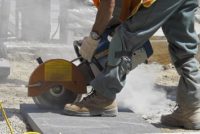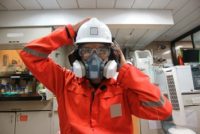Safety is a process, and as such, needs to be managed. This section offers resources to create a viable safety program, sell it to senior management, train supervisors and employees in using it, and then track and report your progress. Look also for ways to advance your own skills in these areas, both for your current job, and those that follow.
Employers could do more with existing technologies to reduce worker fatalities, according to a report released by the National Safety Council (NSC). “Safety Technology 2020: Mapping Technology Solutions for Reducing Serious Injuries and Fatalities in the Workplace,” the first report in NSC’s “Work to Zero” initiative, looks at the hazardous workplace situations that most often […]
Older workers were more likely to be fatally injured on the job when compared with workers overall, the Department of Labor’s Bureau of Labor Statistics (BLS) found in a recent analysis.
The world is evolving and with it comes adapting regulatory changes. Is your organization prepared to meet the latest OSHA updates?
Workplace violence prevention should be a priority for every environment, health, and safety professional. Although you may feel certain it could never happen at your organization, planning for the possibility of a violent incident is essential for ensuring that your employees stay as safe as possible. On our latest podcast episode, we’re talking to a […]
On February 4, the Occupational Safety and Health Administration (OSHA) revised its National Emphasis Program (NEP) for enforcement of the construction, general, and maritime industry standards for respirable crystalline silica exposure. OSHA canceled the 2008 Crystalline Silica NEP in October 2017. The replacement NEP addresses enforcement of OSHA’s amended standards for respirable crystalline silica—promulgated March […]
Nationwide, approximately 1.4 million workplaces provide at least some of their employees with respiratory protection. Studies indicate that at these workplaces, gaps exist in their written respiratory protection program, their understanding of Occupational Safety and Health Administration (OSHA) requirements, or the administration of the program. These gaps lead to issues in mandatory compliance or recommended […]
Media reports of a respiratory illness caused by a newly discovered coronavirus are pervasive and relentless. How concerned should employers be about infections at your workplace or jobsite?
Experts at Safety.BLR.com® were recently asked, “I need information on portable eyewash stations. Can we use a tank and water hose?” Unless the water is appropriately treated and at the right temperature, the answer is no. Read on for more details on portable eyewash stations.
The Occupational Safety and Health Administration (OSHA) cited a Jacksonville, Florida, roofing contractor for fall hazards at three construction sites and is seeking $1,007,717 in penalties. OSHA cited Florida Roofing Experts, Inc., owned by Travis Slaughter, under its egregious citation policy with eight willful violations of the fall protection standard.
While workplace violence can happen in any industry or occupation, healthcare and social services workers face a high risk of job-related violence. Workplace assaults ranged from 23,540 and 25,630 annually over a 3-year period, and 70% to 74% of those occurred in healthcare and social services settings.










